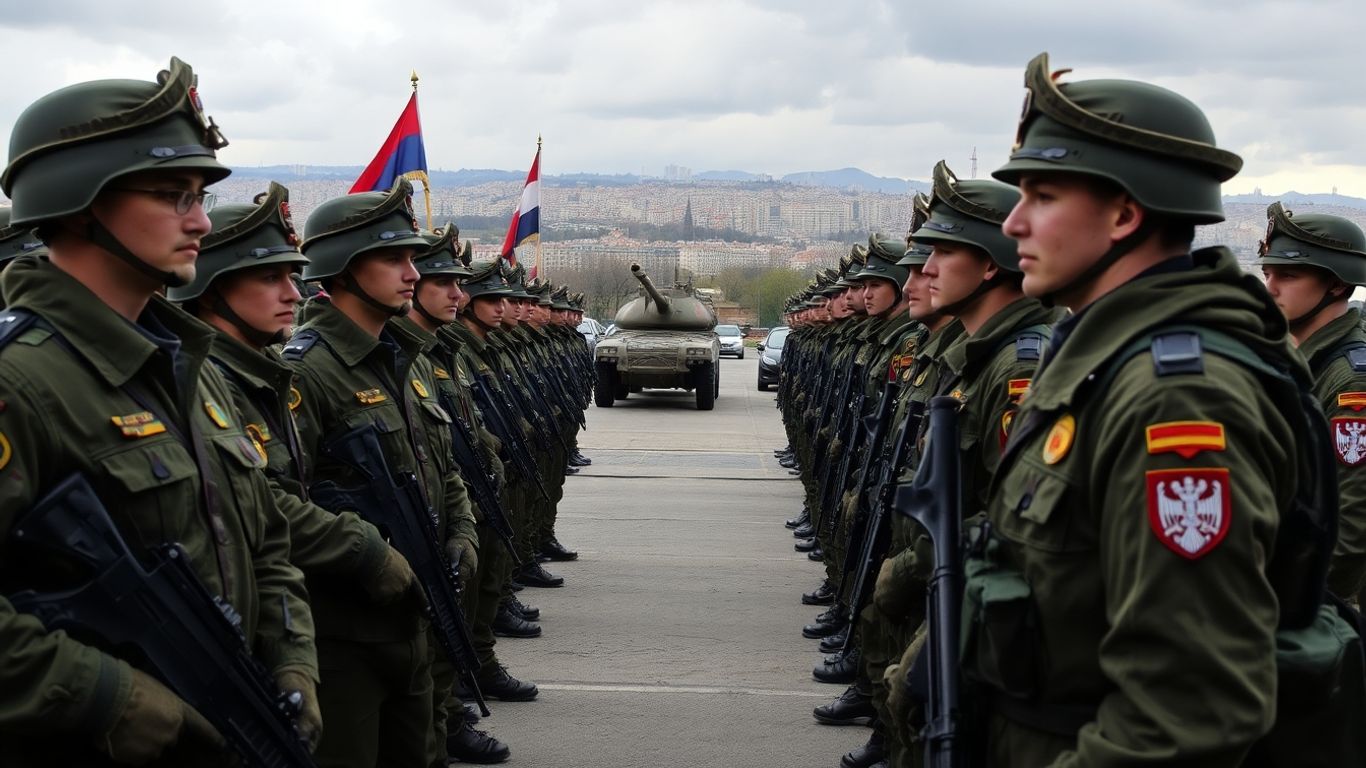Amid escalating political tensions and mass opposition protests, Serbia held its largest-ever military parade in Belgrade. The event, intended to display national strength on the Day of Serbian Unity, Freedom, and the National Flag, comes as President Aleksandar Vučić faces unprecedented criticism at home and growing international scrutiny.
Key Takeaways:
- Serbia staged its biggest military parade, featuring 10,000 troops, tanks, drones, and jet fighters.
- President Vučić framed the event as a symbol of national unity and deterrence, but opposition voices accused the government of politicizing the military.
- The country faces persistent anti-government protests sparked by a fatal construction collapse, with students and rights groups decrying a crackdown on dissent.
A Parade of Power and Political Messaging
Columns of soldiers, armored vehicles, and advanced weaponry—including French Rafale jets and Israeli rocket systems—paraded through New Belgrade as crowds waved national flags. Vučić hailed the demonstration as evidence of Serbia’s robust defense capability, situated in a region largely surrounded by NATO states.
The parade’s arsenal highlighted Serbia’s careful geopolitical balancing act. Alongside Russian and Chinese military equipment, the appearance of newly ordered French jets and Israeli artillery showcased the government’s intent to maintain ties with both east and west, even as EU membership remains elusive.
Opposition and Allegations of Repression
While the parade unfolded, university students and opposition supporters held protest rallies demanding accountability for a deadly train station canopy collapse in Novi Sad last year, which killed 16. The disaster—attributed by critics to corruption and mismanagement—has fueled months of demonstrations demanding early elections and a clampdown on graft.
Opposition leaders accused the government of using the parade to bolster Vučić’s image amid growing unrest. Riot police prevented students from approaching the military spectacle, and rights groups reported that some citizens were pressured to attend the event in support of the ruling party. Recent months have seen a marked increase in police interventions and reports of violence against demonstrators, raising alarm among human rights organizations.
Allegations of Police Abuses
Testimonies from student activists describe incidents of physical and psychological abuse during detentions, including threats and violence in police custody. These accounts have sparked widespread condemnation by groups such as Amnesty International, who warn such actions may amount to torture. Official investigations into the reported abuses have so far yielded no substantive outcomes, increasing public skepticism and mistrust.
Serbia’s Geopolitical Tightrope
The parade’s international hardware sent a clear signal about Serbia’s strategic ambitions. Defense spending has soared, as the government claims the need to avoid falling behind neighbors’ military buildups. Still, Serbia’s stated aim of joining the European Union sits uneasily alongside its close relationships with Russia and China—partnerships underlined by arms deals and joint appearances on the world stage.
The Road Ahead
With protests showing no sign of abating and pressure mounting from both domestic and international observers, Serbia’s leadership faces a crucial test over the coming months. The balance between projecting military strength and respecting democratic freedoms will likely define the next chapter of the country’s political narrative.
Sources
- Serbia Stages Massive Military Parade Amid Opposition Criticism, Radio Free Europe/Radio Liberty.
- Serbia stages a large military parade to showcase tanks, jets and missile systems, AP News.
- Serbia stages massive military parade, described as ‘country’s biggest display of army strength’, Euronews.com.
- In the Bowels of Serbia’s Govt HQ, Students Beaten, Threatened by Police, Balkan Insight.
- Serbian protest President Vucic 11 months after canopy collapse, AP News.






